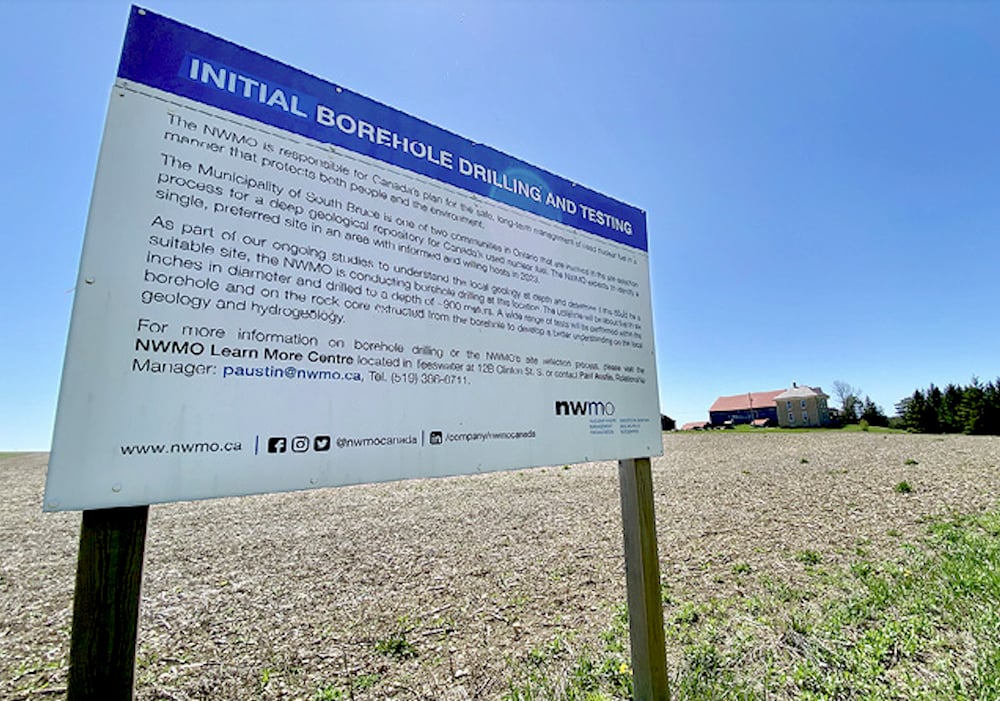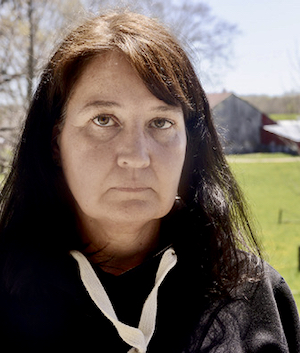Battle lines clear in nuclear waste storage plan

A battle between opponents and proponents of the proposed geological repository for nuclear waste in South Bruce continues to rage ahead of an Oct. 28 referendum.
Read Also
Opinion: Is it time for a farmer venture fund?
The Agri Tech Venture Forum in Toronto is a fascinating event, and much more different than the farmer-focused events I…
The Nuclear Waste Management Organization (NWMO) is seeking a home for waste from the province’s nuclear generating stations, and a 1,700-acre area in South Bruce is one of the proposed sites. It includes 250-acres for the waste site itself, surrounded by a 1450-acre buffer zone.
Why it matters: The nuclear sector has the challenge of finding suitable long-term below-ground storage for Canada’s low-to-intermediate nuclear waste.
Those in favour see the once-in-a-lifetime proposal as a rural industry lifeline that can provide financial stability and community investment. Opponents say the decision process lacks transparency and some farmers wonder how the repository could affect their livelihoods.
“There’s 25 per cent strongly opposed, 25 per cent strongly in favour, and 50 per cent asking for more information so they can make an informed decision,” said Mark Goetz, mayor for the Municipality of South Bruce.
He said the repository would create 700 direct jobs, 1,100 indirect jobs, approximately $1 billion in economic spin-offs, a one-time payment of $418 million for securing the project, and a $70 million road use agreement.
“This is the biggest economic development we’ve ever seen and likely ever will see. I think it deserves a fair shake to make sure we’ve got everything dotted and Ts crossed.”
Opponents, who include the Protect Our Waterways—No Nuclear Waste group and local farmers, are concerned about wording in the host agreement and have accused some factions of lying about the process. They also question NWMO’s refusal to answer questions in a public setting.
Michelle Stein and Sharon MacDonald have farms that bookend the site acquired by the NWMO and are among the opponents.


photo:
Diana Martin
“When I asked about nuclear stigma (at the Community Liaison Committee meeting), the answer I got back was, ‘we don’t think that will be much of an issue; it is something we could study in the future’,” said Stein. “Yet when you read the report, there’s a whole section on nuclear stigma, but they didn’t want to answer that in the public setting.”
Stein raises dairy sheep and beef. Her butcher told her he won’t process her lambs if the proposed repository goes through, and her sheep milk processor wouldn’t commit to maintaining a business relationship.
Goetz said Teeswater is 40 kilometres from North America’s largest nuclear plant, which stores five per cent of the nation’s nuclear waste above ground 300 yards from Lake Huron. He said there’s no issue marketing products from 1,300 beef cattle that graze on Bruce Power’s doorstep.
Fifth-generation farmer Darren Ireland, who oversees Gay Lea Foods Teeswater facility, sold and optioned portions of his land for that repository.
He said that years ago, Gay Lea tested milk for contaminants within the radius of the Bruce Nuclear, Pickering and Darlington Plants. Every water well, livestock, poultry, vegetable and cash crop product was also tested, he added.
A third-party conducts the tests now, and he can’t recall any failed safety tests.
Ireland said he is puzzled that Kinectrics, a large facility that opened in 2021 to provide laundry services for Bruce Power’s radioactive PPE equipment, failed to raise an eyebrow. Yet the repository proposal has divided the community.
“I’m not here to criticize (Kinectrics) because I’m sure they’ve got to follow procedure and make sure it all meets requirements,” he said. “We don’t care about that, but we’re worried about something that hasn’t even come here yet.”
Ireland also questioned how South Bruce can build roads, retain services and attract new investment without new industry.
Given the amount of land gobbled up annually by sprawl in Toronto, Bolton or Mississauga, and by gravel pits, Ireland said it’s worth considering a project that involves 250 acres converted into jobs and the balance of the 1,450 acres remaining productive.
As a fifth-generation farmer, Goetz said he understands the struggle to envision how a project of this size could positively reshape the community while still supporting the agriculture sector.
South Bruce is home to 21.4 per cent of Bruce County’s agriculture sector and half its dairy, dairy product and beverage manufacturing. The 25 per cent agricultural tax base is no longer enough to bolster the municipality’s finances, Goetz said.
He added that the municipality informs residents at every step and has posted the recently signed hosting agreement. He encourages everyone to read and submit questions to the South Bruce repository team.
Stein and MacDonald said clauses in the host agreement hint at land expropriation loopholes for expansion and bind municipal support during the regulatory process. In contrast, the NWMO is tied only to “good faith efforts” to incorporate or address municipal comments when making major applications to government regulators.
“The municipality cannot publicly disagree with this project; they cannot do anything to hinder or delay the project,” Stein said. “Which raises the question, if this is supposed to be such a great deal, why do they have to gag people?”
Goetz said the federal government can expropriate land with or without agreements in place, so he’d rather build relationships at the table to get the best possible municipal deal, protect agriculture and avoid future conflicts.
The NWMO has assured him that the 1,700 acres are more than sufficient for Canada’s nuclear waste volumes over its 100-plus-year life span, Goetz added.
Stein said NWMO’s property loss and business loss protection plans to cover lost income and property value related to the repository are insulting because they fail to recognize the impact on growth potential or relocation limitations.
“You can’t just milk sheep anywhere,” she said. “To find a processor, we would have to go south, where land is obviously more expensive, and I don’t want to go north.”
Another concern is placement of the 63-acre, 15-metre-high excavated rock management area and potential radon exposure. Radon is a naturally occurring radioactive gas released from soil and rock. Its half-life is 3.82 days, but prolonged exposure is known to cause cancer.
Stein and MacDonald, who farm at either end of the site, have each been told the rock pile would be in the other’s “backyard.”
A 2024 NWMO study showed no significant hazard during construction, operation and 100 metres from a release point, with approximately 100 times lower concentration of radon than Ontario’s average.
Ireland initially questioned the safety aspect of the project, whether the area contained suitable rock formations to house the underground facility and whether it would impact the water table. He agreed to a 12-inch pipe borehole on his optioned land to expand South Bruce’s knowledge of available untapped natural resources.
“I am allowing the study because I want to learn and get educated to make sure we make a sound and safe decision,” Ireland said. “I’m still learning about it. I can’t answer yes or no to the future yet because I need to learn more.”
Under the Municipal Elections Act, the electronic referendum vote scheduled Oct. 28 requires a 50 per cent turnout of eligible voters to be valid.
“If the referendum fails, it falls back onto the shoulders of the six councillors and the mayor to make the decision and decide the fate of the municipality,” Said Goetz. “It’s too easy to point the finger down the road at seven people versus (when) everybody has the equal opportunity here to cast a vote and have an equal say.”
If South Bruce and the Saugeen Ojibway Nation communities vote yes to the project, and members of the second proposed site in the Wabigoon Lake Ojibwa Nation-Ignace community also vote yes, the NWMO will make the final site decision.
Source: Farmtario.com

